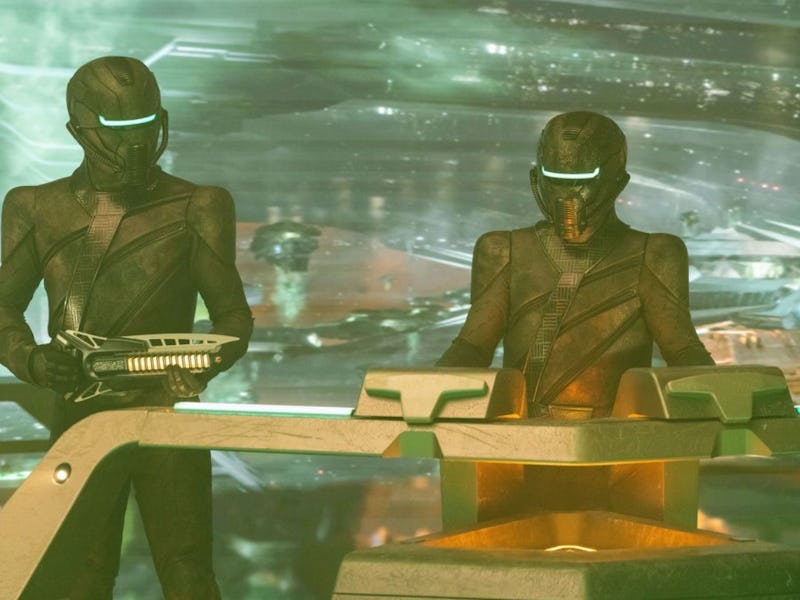Star Trek: Discovery’s Series Finale Features Ridiculously Weird But Real Physics
Yes, black holes can really do that.

In the penultimate episode of Star Trek: Discovery, gravity is a major plot point. The Discovery crew tracks a shuttle full of Progenitor technology to a dead star system, now made up of a pair of black holes, and finds the shuttle hanging out at one of the system’s Lagrange points. But what, exactly, is a Lagrange point, and how does it work? Does a system like that really exist?
Inverse explains the wild, but convenient, physics behind the episode.
Tonight’s episode is the second-to-last in the series.
Two Black Holes in a Surreal Dance
A pair of black holes waltzing around a shared center of gravity sounds like exactly the kind of bizarre TV science that Star Trek would invent. But it actually happens all the time in the real universe.
Massive stars, the kind that eventually collapse and form black holes, tend to form in pairs. And those massive stars also tend to have pretty short life spans (in cosmic terms). When they run out of fuel and go supernova, they eventually leave behind pairs of black holes or neutron stars.
Many of those orbiting pairs of black holes will eventually spiral toward each other and collide, merging to form an even larger black hole — and stirring up ripples called gravitational waves in the fabric of spacetime. Instruments here on Earth, spread out over several miles, can actually detect the passage of some of those waves and trace them back to their distant, cataclysmic sources. Sometimes science is weirder than science fiction.
NASA provided this handy map of our Solar system’s Lagrange points.
When Gravity Gets Extremely Weird
The other seemingly impossible bit of astrophysics in the episode is also, surprisingly, real — and very useful. The Discovery crew finds a shuttle packed with progenitor technology basically parked in space at a spot between the two black holes called a Lagrange point.
Every time two objects orbit each other in space — whether they’re two black holes or something more familiar, like Earth and the Sun — you’ll find exactly five places in the system where the gravitational pull of the two objects is perfectly balanced. Picture a game of tug-of-war that’s locked in a tie; that’s what a Lagrange point is like. That makes them pretty good places to park a spacecraft (like the James Webb Space Telescope, or JWST, or maybe a super-secret shuttle full of alien tech), because the spacecraft doesn’t have to burn much propellant to stay in the same place.
(We should note here that when we say “in the same place,” we mean “in the same place, in relation to the rest of the system,” because everything in space is constantly moving, and there are no fixed points except in relation to other things.)
You’d think that if the gravitational tug-of-war between two objects was going to balance out, it would do so at a point exactly between them, or maybe slightly closer to the less massive member of the pair. And that’s partly true; the first Lagrange point does sit just about where you’d expect. But the second and third sit on the far side of the smaller object and the larger object, respectively. The fourth and fifth sit off to the sides; if you draw a line between the two black holes, then draw two more lines to make an equilateral triangle on either side, the points of those triangles are Lagrange points L4 and L5, and they’re actually the most stable of the whole group.
In our own Solar System (which is, in the fictional world, somewhere in the Discovery crew’s distant past), JWST sits at the second Lagrange point, on the far side of Earth from the Sun. It’s a great vantage point for staring out at where, someday, we may boldly go.